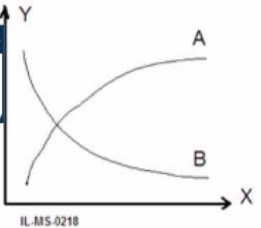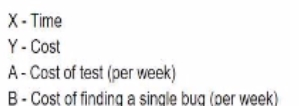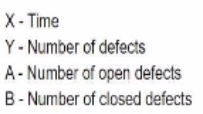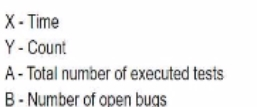File Info
| Exam | ISTQB Certified Tester Foundation Level 4.0 |
| Number | CTFL4 |
| File Name | ISTQB.CTFL4.VCEplus.2024-07-17.33q.tqb |
| Size | 750 KB |
| Posted | Jul 17, 2024 |
| Download | ISTQB.CTFL4.VCEplus.2024-07-17.33q.tqb |
How to open VCEX & EXAM Files?
Files with VCEX & EXAM extensions can be opened by ProfExam Simulator.
Coupon: MASTEREXAM
With discount: 20%





Demo Questions
Question 1
Which of the following statements is true?
- In Agile software development, work product documentation tends to be lightweight and manual tests tend to be often unscripted as they are often produced using experience-based test techniques
- Sequential development models impose the use of systematic test techniques and do not allow the use of experience-based test techniques
- In Agile software development, the first iterations are exclusively dedicated to testing activities, as testing will be used to drive development, which will be performed in the subsequent iterations
- Both in Agile software development and in sequential development models, such as the V-model, test levels tend to overlap since they do not usually have defined entry and exit criteria
Correct answer: A
Explanation:
This answer is correct because in Agile software development, work product documentation, such as user stories, acceptance criteria, or test cases, tends to be lightweight and concise, as the focus is on working software and frequent communication rather than comprehensive documentation. Manual tests tend to be often unscripted, as they are often produced using experience-based test techniques, such as error guessing or exploratory testing, which rely on the tester's skills, knowledge, and creativity to find defects and provide feedback.Reference: ISTQB Foundation Level Syllabus v4.0, Section 3.1.1.2, Section 3.2.1.2 This answer is correct because in Agile software development, work product documentation, such as user stories, acceptance criteria, or test cases, tends to be lightweight and concise, as the focus is on working software and frequent communication rather than comprehensive documentation. Manual tests tend to be often unscripted, as they are often produced using experience-based test techniques, such as error guessing or exploratory testing, which rely on the tester's skills, knowledge, and creativity to find defects and provide feedback.Reference: ISTQB Foundation Level Syllabus v4.0, Section 3.1.1.2, Section 3.2.1.2
Question 2

Which sequence of stated in the answer choices is correct in accordance with the following figure depicting the life-cycle of a defect?

- S0->S1->S2->S3->S5->S1
- S0->S1->S2->S3->S5->S1->S2->S3
- S0->S1->S2~>S3->S4
- S0->S1 ->S2->S3->S5->S3->S4
Correct answer: D
Explanation:
According to the ISTQB Certified Tester Foundation Level (CTFL) v4.0, the life cycle of a defect typically follows a sequence from its discovery to its closure. In the provided figure, it starts with S0 (New), moves to S1 (Assigned), then to S2 (Resolved), followed by S3 (Verified). If the defect is not fixed, it can be Re-opened (S5) and goes back for verification (S3). Once verified, it is Closed (S4).Reference: ISTQB Certified Tester Foundation Level (CTFL) v4.0 Syllabus, Section 1.4.3, Page 17. According to the ISTQB Certified Tester Foundation Level (CTFL) v4.0, the life cycle of a defect typically follows a sequence from its discovery to its closure. In the provided figure, it starts with S0 (New), moves to S1 (Assigned), then to S2 (Resolved), followed by S3 (Verified). If the defect is not fixed, it can be Re-opened (S5) and goes back for verification (S3). Once verified, it is Closed (S4).Reference: ISTQB Certified Tester Foundation Level (CTFL) v4.0 Syllabus, Section 1.4.3, Page 17.
Question 3

The following chart represents metrics related to testing of a project that was competed. Indicate what is represented by tie lines A, B and the axes X.Y

Correct answer: D
Explanation:
Option D correctly explains what is represented by the lines A, B and the axes X, Y in a testing metrics chart. According to option D:X-axis represents TimeY-axis represents CountLine A represents Number of open bugsLine B represents Total number of executed testsThis information is essential in understanding and analyzing the testing metrics of a completed project. Option D correctly explains what is represented by the lines A, B and the axes X, Y in a testing metrics chart. According to option D:
X-axis represents Time
Y-axis represents Count
Line A represents Number of open bugs
Line B represents Total number of executed tests
This information is essential in understanding and analyzing the testing metrics of a completed project.





